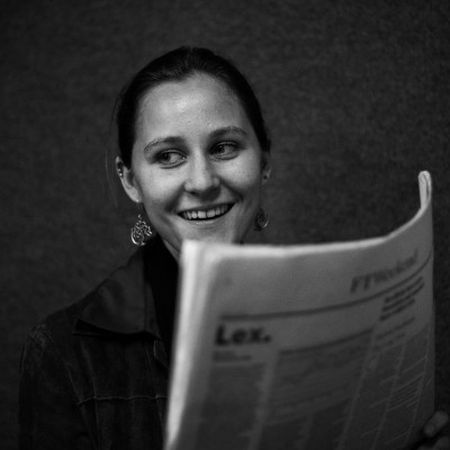Stakeholders from governments, civil society and youth groups met at a G20 side event in Cape Town on Wednesday, 1 October to discuss children’s online safety and rights in the context of rapidly evolving technologies across the globe.
Among those in attendance were South Africa’s minister of communications and digital technologies, Solly Malatsi, and Norway’s minister of digitalisation and public governance, Karianne Tung. The event was hosted by Unicef, the Royal Norwegian Embassy in Pretoria and the G20 South African Presidency.
Malatsi said the growth in connectivity, datafication and artificial intelligence (AI) could transform the lives of South Africa’s children, but added that “the positive nature of this transformation is far from guaranteed”.
“With the rise of connectivity, the known risks are also on the rise — exposure to abuse, exploitative material, grooming, cyberbullying, addictive design, online betting, harmful content. All of these become a norm when … they are not fairly regulated to protect [young users],” he said.
/file/dailymaverick/wp-content/uploads/2025/04/ED_515156-1.jpg)
Learning from Norway
Norway is in the process of introducing a new law that would prohibit social media platforms from offering their services to children under the age of 15 as part of the government’s efforts to protect young people online. A public participation process is under way, guided by the country’s Ministry of Children and Families. The legislation will be in line with the European Union’s Digital Services Act, which aims to prevent illegal and harmful activities online.
Tung sat down with Daily Maverick to discuss the way forward for improving the online safety of young people, both in Norway and internationally.
On the introduction of the new law prohibiting children’s social media access, Tung said: “We are putting the responsibility mainly on the tech companies, because it is [the companies] that have to implement the different solutions. The responsibility is on tech companies’ shoulders to make sure that children … are safeguarded while they are online.”
She said a key part of the solution was the implementation of effective age verification systems on digital platforms.
“Mainly, the public debate in Norway is about getting children safe, because we can now see the consequences [of unregulated social media access]. Children [suffer from] lack of sleep, they have mental issues, they have social issues because they have been exposed to damaging algorithms. We haven’t been able to take good enough care of our children online, so there is huge demand from the public, from everyone, to do something.
“We are also very eager … to make sure that we do it in a way that keeps the children’s personal privacy safe, that they have their human rights … and their needed education.”
In parallel with the introduction of the new law, the Norwegian government is advocating for greater international cooperation and regulation around children’s online safety. Tung noted that a “unified, global approach” to the problem, rather than a “patchwork” of different strategies across various nations, would make it easier to hold large tech companies accountable.
“We try to work internationally when it comes to the age verification solution, so that we can have the solution across borders,” she said.
South Africa and Norway differ in many respects, including their socioeconomic profiles, rates of digitalisation, and populations. Norway is one of the more digitalised countries in the world, with about 99% of its population of 5.5 million having access to the internet.
In South Africa, around 79% of its population of 64 million has some form of internet access.
Tung said the cultures of both countries were founded on principles of multilateralism, cooperation and respect for international law and human rights.
“Even though we are quite different, we share a lot of the same values. I think this strong … connection that we have [means] we can learn from each other, and I learn a lot from my South African colleagues.”
South Africa and Norway held annual meetings on human rights, said Tung, and had identified the issue of protecting children online as a shared struggle. The first step towards solving the problem was sharing knowledge and learning about other countries’ strategies.
“There is a demand internationally for global regulations, because the tech companies are big and powerful. They operate across borders, and the push from one tech company towards one single country is really a push on us all. That’s why we have to gather and work together to create these international regulations — because I think no single country can solve this alone,” she said.
Among the other approaches the Norwegian government is taking to improving children’s online safety are the introduction of a white paper on “safe digital upbringing”; the provision of recommendations on screentime for younger children; and restrictions on mobile phones in schools.
/file/dailymaverick/wp-content/uploads/2025/10/IMG_8347.jpg)
Commitments to children’s safety
During the G20 side event, Malatsi said progress towards universal and equitable digital inclusion required an acknowledgement that children engaged with online content differently from adults.
“Our AI policy and governance approaches should identify children as a vulnerable group, and we must adopt risk-based measures. Harm to children must be treated as a high risk that warrants stringent safeguards. We must support data governance that improves the effectiveness of safety tools and moderation quality, underpinned by inclusiveness and multilingual data-sets,” he said.
Unicef has estimated that a third of the 5.5 billion internet users worldwide are children, according to Irfan Akhtar, Unicef South Africa’s deputy representative. In surveys conducted by the organisation across multiple countries, 70% of children surveyed said the internet was essential for their life, learning, participation and self-expression, but only 40% felt confident that they could protect themselves from harm or exploitation online.
“Unicef is committed to working with the different partners in promoting inclusive access to a safe digital environment,” said Akhtar.
Iagê Miola, the director of Brazil’s National Data Protection Agency, noted that Brazil had already taken important steps towards protecting children online, including passing a law that restricted cellphone use in schools and introducing a guide for families on how to manage screentime.
The country has also introduced a law updating protections for children online, which will come into effect in March 2026. It will require internet applications that target children or are likely to be accessed by children to incorporate measures such as parental supervision mechanisms.
“In the law, for content, products or services online that are considered inappropriate or prohibited for children, these services must have age assurance mechanisms,” said Miola.
In her address to the gathering, Tung emphasised that countries needed to take action to protect independent media and civil society; improve education for children in terms of digital, media and information literacy; and fight for a unified approach to protecting children online. DM




 The rise of connectivity has exposed children to more online risks, including abuse, exploitative material, grooming, cyberbullying, online betting and harmful content. (Photo: Annie Spratt / Unsplash)
The rise of connectivity has exposed children to more online risks, including abuse, exploitative material, grooming, cyberbullying, online betting and harmful content. (Photo: Annie Spratt / Unsplash) 